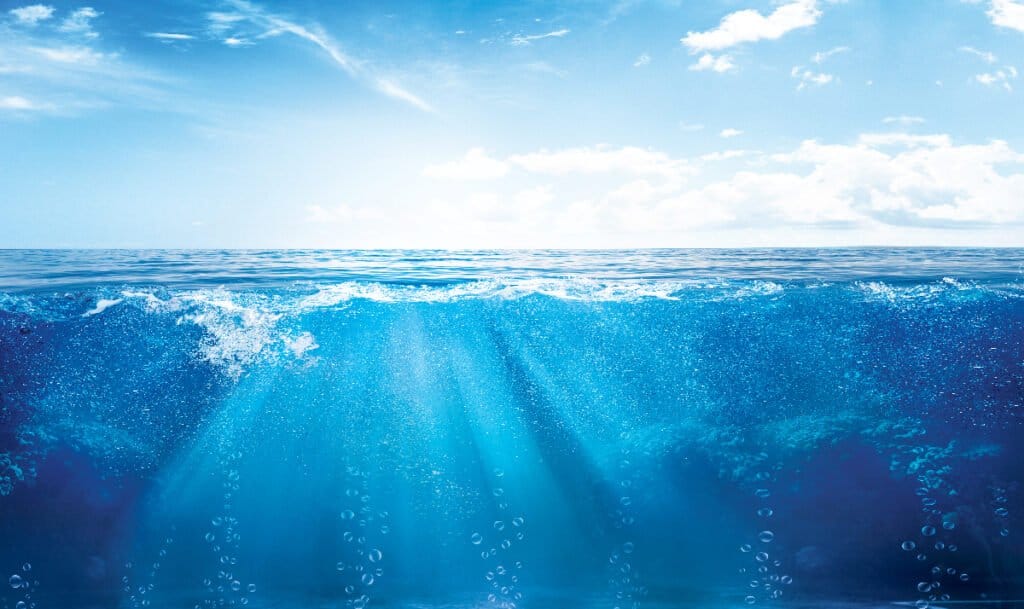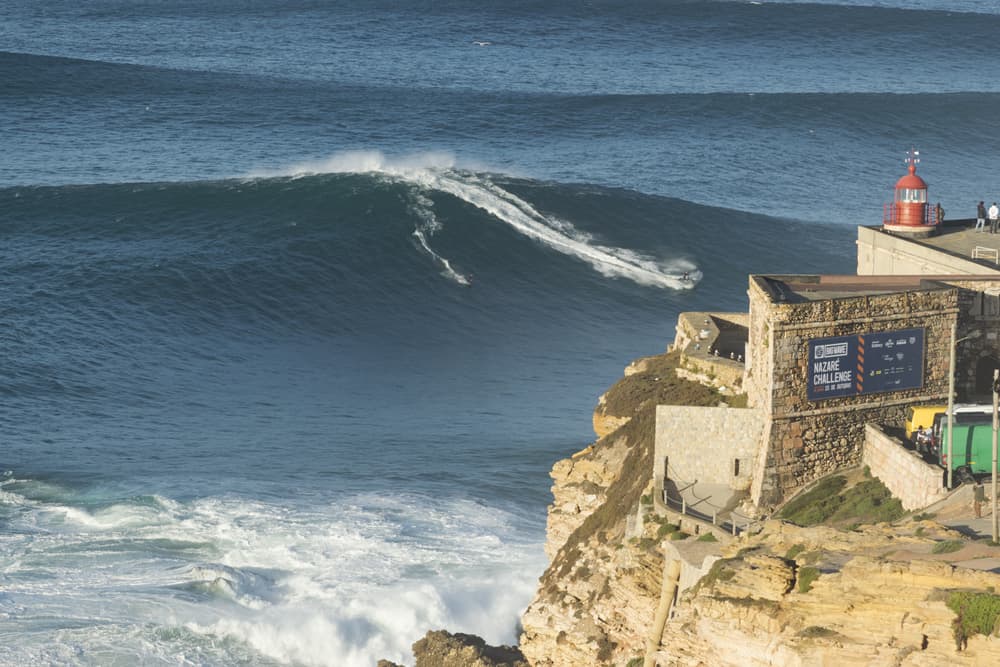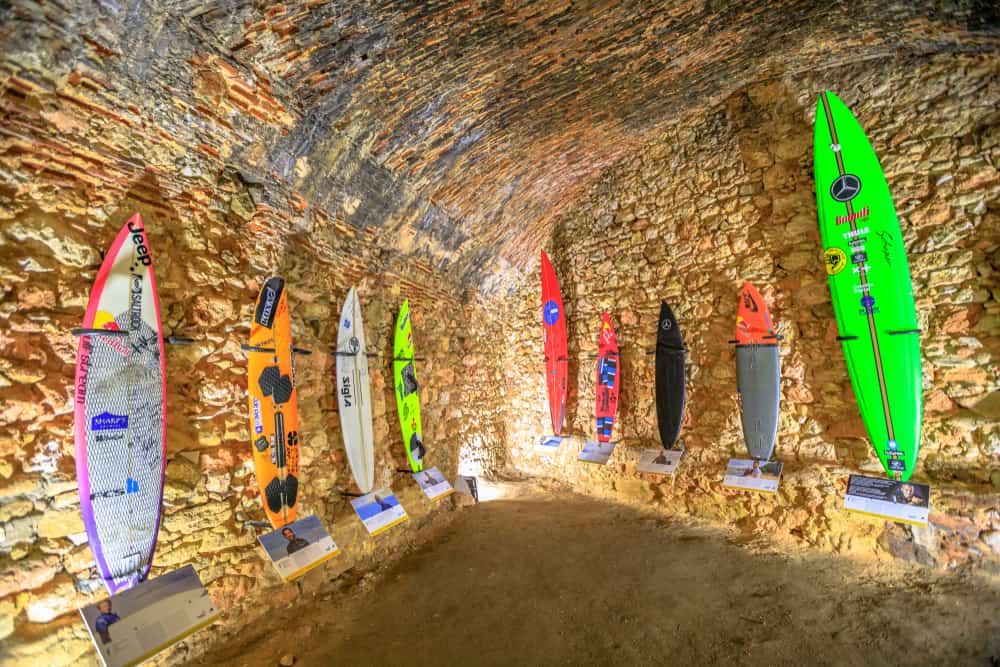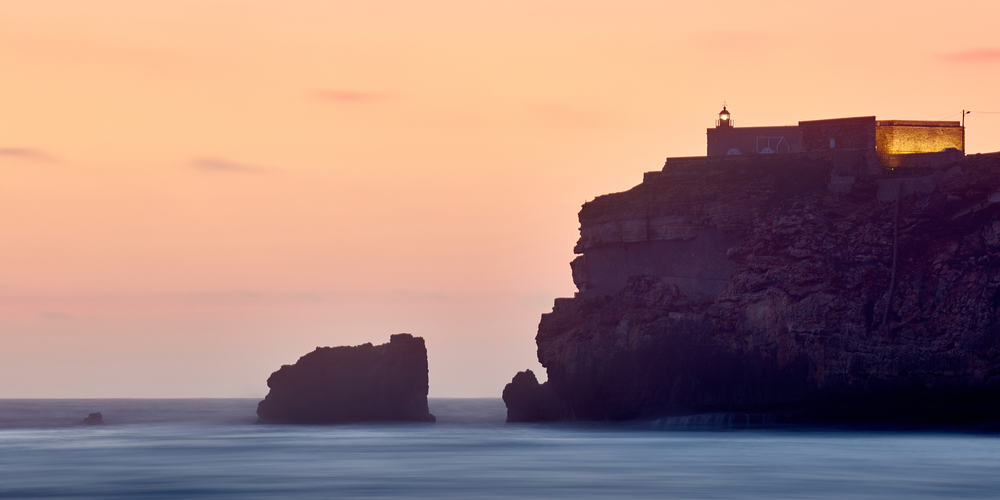Ocean waves are powerful and potentially deadly. Naturally, humans have taken up the challenge of riding them on surfboards. While some people stick to surfing small waves that are barely taller than them, others want to ride waves that are the size of office buildings. Today, we’re going to talk about the largest wave ever surfed.
We’ll show you how tall it was, where it formed, and talk about the brave surfer that decided to ride the wave! We will also consider just how difficult it is to measure a wave.
How Do Waves Form?

Waves can form when the wind blows over a body of water
©PHOTO JUNCTION/Shutterstock.com
Before we get into the largest wave ever surfed, we need to understand how they form. Waves can form in a few ways, but the most common way is when the wind blows across the water. The ongoing disturbance caused by the wind makes a wave crest that crashes into the water or along a coastline. Waves also form as a result of gravitational forces impacting the planet. These are called tidal waves, and they are not to be confused with a tsunami.
Multiple factors can impact wave generation. Wind speed, the amount of time the wind is blowing across the surface of the ocean, and even the topography of the ocean floor near certain coasts can affect the size of waves.
For example, when a hurricane is approaching the coast, the water becomes tumultuous, and the waves become larger and stronger than they would without the presence of such enormous amounts of energy.
Some places on the planet have the right combination of storm frequency and land formations to get large waves quite often. Shore breaks, also called surf breaks, such as shoals, reefs, or rocks can create optimal conditions for surfable waves to form when the right water conditions, including a storm, are present.
When big storms are sending energy through the ocean water, surfers will flock to surface places. The Nazaré Coast in Portugal and the coast of Maui, Hawaii are two popular areas to catch the biggest waves. These places have the right oceanic topography and other factors to create massive waves.
How Tall Was the Largest Wave Ever Surfed?

Sebastian Steudtner’s record-setting wave at Praia do Norte was 86 feet high.
©Jonathan Mitchell Images/Shutterstock.com
The largest wave ever surfed measured 86ft in height and was ridden by a man named Sebastian Steudtner from Germany. The record was set in October 2020 in Praia do Norte in Nazaré, Portugal.
The Praia do Norte has been the site of many surfing records throughout the years, including six of the last seven records for the largest wave surfed. Other major sites for previous surfing records include the Cortes Bank off the coast of California as well as Jaws Beach in Maui, Hawaii.
Steudtner waited in the waters as the waves started to build. When he saw what looked like a good wave formation, he had his partner on a Jet Ski start towing him toward the wave. He successfully rode the wave, feeling the immense power in the water. Steudtner believed that the wave was record-breaking or close to it.
Unfortunately, he did not know just how large the wave was after he surfed it. In fact, he didn’t find out just how large the wave was or that he had secured the world record for over a year.
How Did They Measure the Largest Wave Ever Surfed?

Researchers used the measure from Steudtner’s heel to knee as a scale.
©Benny Marty/Shutterstock.com
A major problem that surfers run into when setting world records is measuring the waves they surf. For one thing, having a third-party present is impractical. Having a scientist or world record representative on shore for every surf session is simply not possible.
For another thing, measuring the waves is difficult. Some organizations can’t even agree on how to perform measurements on waves. For example, the Hawaiian scale measures waves from behind the wave. The National Weather Service measures the wave from its peak to trough. A wave that is 20ft high according to the NWS scale could be measured as 10ft in Hawaii.
If people cannot even agree on how to measure the wave in the first place, it makes the process much harder. Additionally, the physical act of measuring the wave is very hard. Waves are very dynamic and transient, after all.
With a record on the line, researchers began to analyze the video and picture footage of the day that the record was set. Fortunately, many angles of the feat were available. Researchers interviewed the camera operators, traveled to the site where the wave occurred, used Steudtner’s lower leg as a reference point, and used 3D Modeling software to convert the pixels in the images into inches.
After 18 months, Steudtner was recognized as the individual who rode the largest wave ever surfed. His record was 6 feet higher than the previous record set by Rodrigo Koxa in 2017. While Sebastian Steudner can enjoy his record, at least for now, other challengers may have already conquered this record.
A New, Unconfirmed Claim to the Largest Wave Ever Surfed

Another surfer at Praia do Norte may have smashed the largest wave record.
©Evgeniyqw/Shutterstock.com
In April 2021, a man named António Laureano claimed that he surfed a wave that was far higher than Rodrigo Koxa’s record. The University of Lisbon’s Faculty of Human Kinetics studied the images from this event. At the end of their measurements, they claimed that the final total was 101.4 feet high.
That means Laureano possibly broke the record by as much as 15 feet! The only problem is determining which team’s measurements were most accurate. Moreover, is it fair for two teams of individuals to measure waves using different methodologies and declare one the winner?
If we simply go by estimates or some researchers’ methods but discard others, then the vaunted 100-foot wave mark for surfing has potentially been passed several times. A quick search on the internet yields a few claims of surfing 100-foot waves. Seeking verification for these records is difficult.
So, who has the record for the largest wave ever surfed? If we go according to Guinness World Records, then it’s the Sebastian Steudtner record. Otherwise, it may be Rodrigo Koxa’s record, who surfed a wave even larger than Garrett McNamara. He apparently surfed a 100-foot wave in 2013.
Until a standardized method is implemented in surfing for wave measurement, appointing world record holders is difficult. In fact, it may be somewhat impossible to rank waves with any certainty. There is always going to be a modicum of guessing when measuring waves.
The photo featured at the top of this post is © iStock.com/TerryJLawrence
Thank you for reading! Have some feedback for us? Contact the AZ Animals editorial team.






